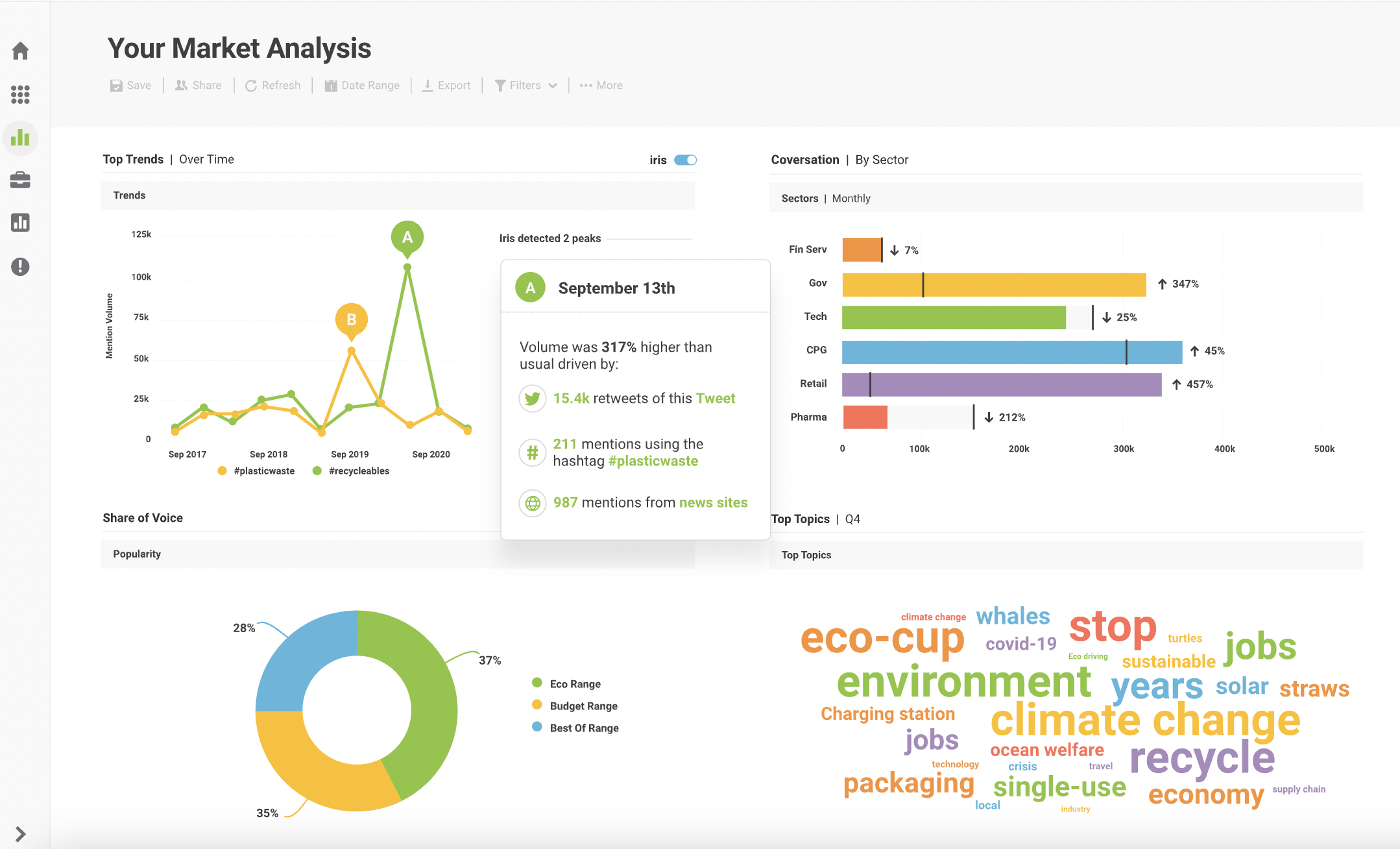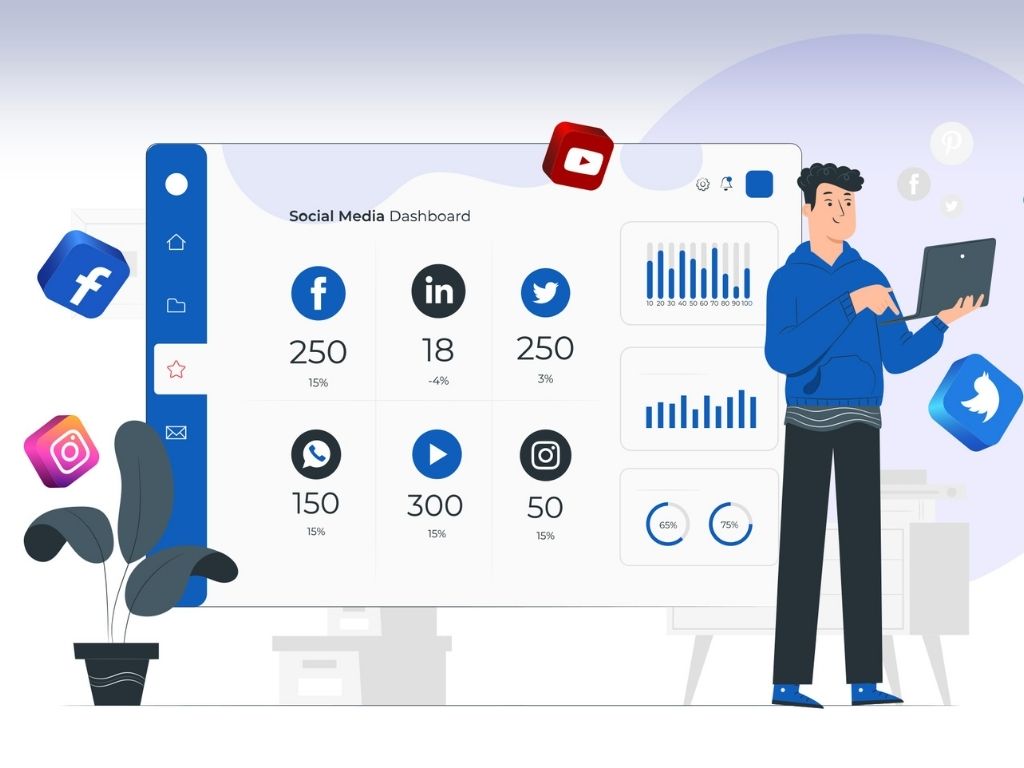In today’s digital age, understanding your audience and their sentiments towards your brand is essential for maintaining a competitive edge. Enter the world of social listening tools, a powerful solution that enables businesses to gain real-time insights into customer opinions, market trends, and brand perceptions. In this article, we’ll delve into the concept of social listening tool, their benefits, key features, and how to make the most of them in your marketing strategy.
What is a Social Listening Tool?

A social listening tool is a digital application designed to monitor, analyze, and interpret conversations and interactions across various social media platforms and online channels. Unlike social media management tools that focus on scheduling and publishing content, social listening tools provide deeper insights by tracking mentions, keywords, and sentiments associated with your brand.
Benefits of Using Social Listening Tools
Understanding Customer Sentiment: Social listening tools allow businesses to gauge how their audience feels about their products, services, and industry trends, helping them tailor their strategies accordingly.
- Enhancing Customer Service: By identifying and addressing customer complaints or inquiries in real time, businesses can improve their customer service and satisfaction levels.
- Competitor Analysis: Social listening tools provide insights into competitor activities, enabling businesses to identify gaps in the market and refine their offerings.
- Crisis Management: Detecting negative sentiments early on helps prevent potential PR crises, allowing businesses to address issues promptly.
- Content Optimization: By analyzing the content that resonates with the audience, businesses can create more targeted and engaging content.
How Do Social Listening Tools Work?
Social listening tools utilize advanced algorithms to track and analyze keywords, phrases and mentions across social media platforms, forums, blogs, and news articles. They collect data and present it in user-friendly dashboards, often categorizing sentiments as positive, negative, or neutral. Some tools even offer sentiment analysis to help businesses gauge the emotional tone behind conversations.
Key Features to Look for in a Social Listening Tool
- Keyword Monitoring: The tool should allow you to track relevant keywords and brand mentions.
- Sentiment Analysis: Accurate sentiment analysis helps in understanding the emotional context of conversations.
- Real-time Alerts: Instant notifications enable timely responses to brand mentions or crises.
- Competitor Tracking: The ability to monitor competitors’ activities for strategic insights.
- Data Visualization: Clear graphical representations for quick and easy data interpretation.
Top Social Listening Tools in 2023
- AIM Insights: Known for its robust sentiment analysis and real-time tracking capabilities.
- Brand24: Offers comprehensive competitor analysis and customizable reporting.
- Brandwatch: Specializes in tracking niche forums and generating actionable insights.
Steps to Implement an Effective Social Listening Strategy
- Set Clear Goals: Define the objectives you aim to achieve through social listening.
- Choose the Right Tools: Select tools that align with your goals and budget.
- Select Relevant Keywords: Identify keywords and topics that are relevant to your industry.
- Monitor and Analyze: Regularly track and analyze conversations and trends.
- Engage and Respond: Actively engage with your audience and respond to their feedback.
Understanding Your Audience Through Social Listening
Social listening helps you understand your audience’s pain points, preferences, and needs. By identifying recurring topics and sentiments, you can tailor your products and marketing strategies to better resonate with your customers.
Monitoring Brand Reputation and Crisis Management
Social listening allows you to monitor brand mentions and catch potential reputation issues early. This proactive approach enables effective crisis management and damage control.
Using Social Listening for Competitor Analysis
By analyzing competitors’ online activities and customer feedback, you can identify gaps in the market, learn from their successes and failures, and fine-tune your offerings.
Social Media Listening for Content Inspiration
Listening to online conversations helps you identify trending topics and pain points, providing valuable insights for creating relevant and engaging content.
Challenges
- Data Overload: The vast amount of data can be overwhelming without proper tools for analysis.
- Language Nuances: Understanding sarcasm, slang, and cultural references requires advanced language processing capabilities.
- Actionable Insights: Extracting actionable insights from raw data demands strategic thinking and analysis.
Best Practices for Maximizing the Value of Social Listening
- Consistency: Regularly monitor and analyze conversations to identify emerging trends.
- Integration: Integrate social listening findings into your broader marketing and business strategies.
- Human Interpretation: Combine automated insights with human analysis for a comprehensive understanding.
Future Trends
As AI and machine learning continue to evolve, social listening tools will become more sophisticated in understanding context, emotions, and even visual content. This will provide businesses with even deeper insights into their audiences.
Conclusion
Social listening tools have transformed the way businesses gather insights and make informed decisions. By understanding customer sentiment, monitoring brand reputation, and gaining competitive intelligence, companies can stay ahead in a dynamic market landscape. If you’re ready to harness the power of social listening for your business, we invite you to request a demo from AIM Technologies.
FAQs
What exactly is social listening?
- Social listening involves monitoring and analyzing online conversations to understand public opinions about brands, products, or topics.
How does social listening differ from social media management?
- Social listening focuses on understanding sentiments and trends, while social media management is more about content scheduling and engagement.
Can social listening help with crisis management?
- Absolutely. Social listening tools can alert businesses to negative sentiments, allowing them to address issues promptly and mitigate potential crises.
Is sentiment analysis always accurate?
- While it’s improving, sentiment analysis may still struggle with understanding complex nuances and sarcasm in language.
What does the future hold for social listening tools?
- The future entails more advanced AI-driven insights, better language understanding, and a deeper focus on visual and video content across the web.


